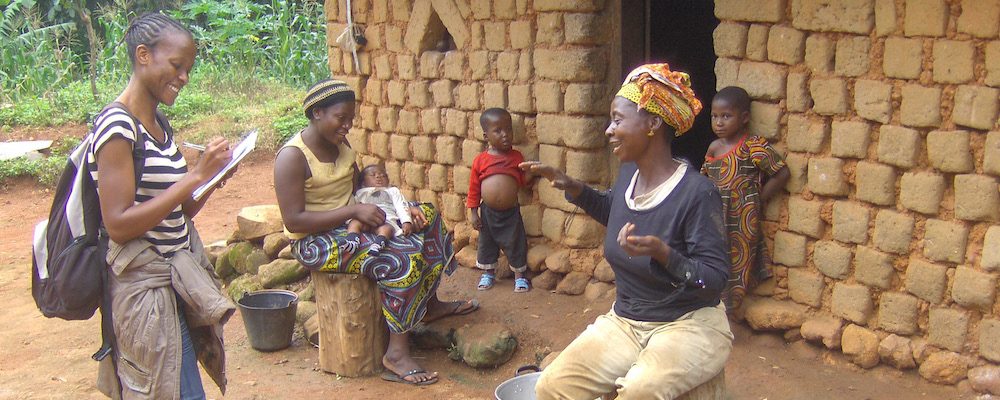
KPAAM-CAM is the first longitudinal study aiming to document not only endangered languages but also multilingual behaviors among rural African populations.
KPAAM-CAM stands for Key Pluridisciplinary Advances on African Multilingualism – CAMeroon. It is an international research project aimed to understand the linguistic and sociocultural dynamics of individual multilingualism in Cameroon, and to explore how they pattern in time and space, with special attention to rural contexts and, since 2018, displaced populations. The KPAAM-CAM research team includes linguists, sociolinguists, anthropologists, computer scientists, and geographers from a number of universities in the US (Buffalo, SUNY), Cameroon (Yaounde 1, Bamenda, Buea, Dschang, and Maroua), and Europe (Florence).
KPAAM-CAM started in 2014 after the main project it stems from received funding from the U.S. National Science Foundation (BCS#1360763). Its first phase ended in 2018 and was followed by KPAAM-CAM GEO, where the collaboration was extended to include also geographers. In October 2021, KPAAM-CAM has received a further grant from the U.S. National Science Foundation to focus on the study of the consequences of forced mobility and displacement on the vitality of small-scale languages and multilingualism. This new phase is called KPAAM-CAM IDP (where IDP stands for “Internally Displaced Person”) and will last until 2025.
Pluridisciplinarity
Based in the Dept. of Linguistics of the University at Buffalo, KPAAM-CAM builds on the realization that multilingualism can only be approached by strengthening cross-disciplinary collaborations.
Linguists, sociolinguists, anthropologists, geographers, computer scientists, and historians have contributed to KPAAM-CAM research so far.
Research outcomes
We focus on phenomena that have been overlooked by linguists and sociolinguists, adopt a radical pluridisciplinary perspective, and approach scientific research in a strong collaborative Global North – South fashion. This is why KPAAM-CAM is innovating African linguistics in a number of respects. Here are some examples:
- A number of publications in international peer-reviewed journals, mostly in linguistics and sociolinguistics, have pushed the boundaries of existing scholarship.
- We created (and are constantly updating) a number of documentary collections housed at the Endangered Languages Archive (www.elararchive.org) that are the first documentary collections that focus on multilingualism rather than ancestral codes as the natural target of documentary projects.
- A number of MA and PhD theses by both US- and Cameroon-based students stemming from field-based research in rural settings or among forcibly displaced populations.
- Check out our output here: https://ubwp.buffalo.edu/kpaamcam/output/
Broader impacts
- KPAAM-CAM provided testing ground for the virALLanguages project (www.virallanguages.org), also featured in the WHO Bulletin and in Linguistics Vanguard.
- Since 2014, KPAAM-CAM has supported 26 Master’s and 12 PhD students enrolled in Cameroonian universities through training and financial support to their research.
- Since early 2024, KPAAM-CAM is supporting a pilot project of language self-documentation in collaboration with the association of Youth in the UNHCR camp of Minawao. You can follow their activities on the “Minawao Youth – our cultures for our future” Facebook page.